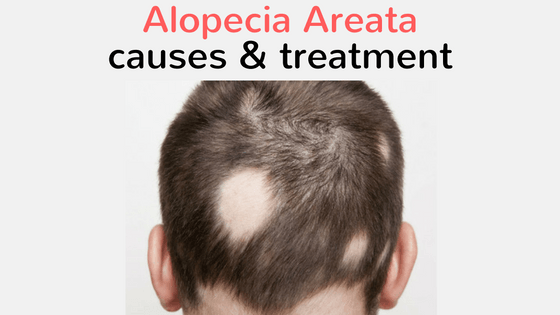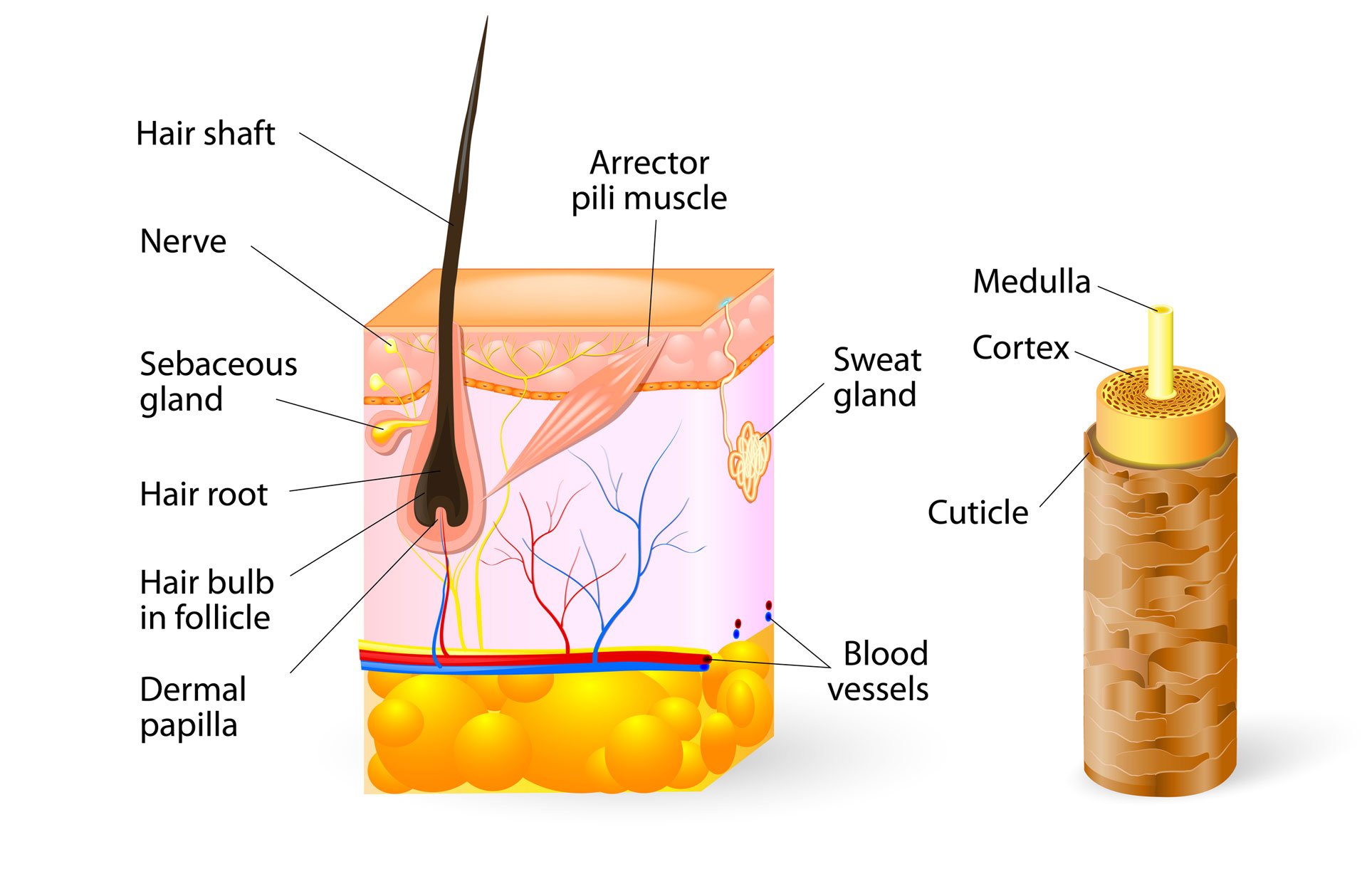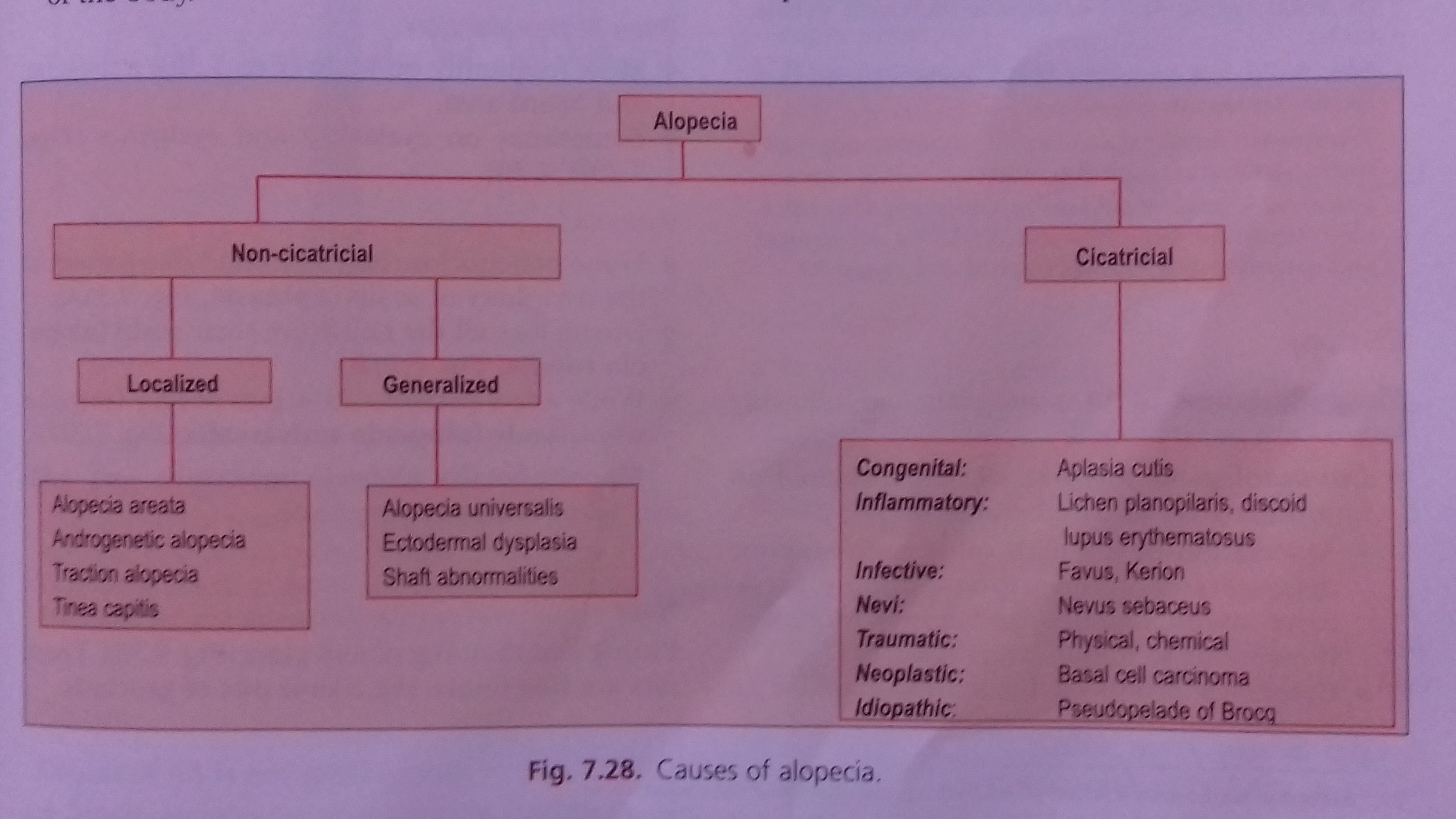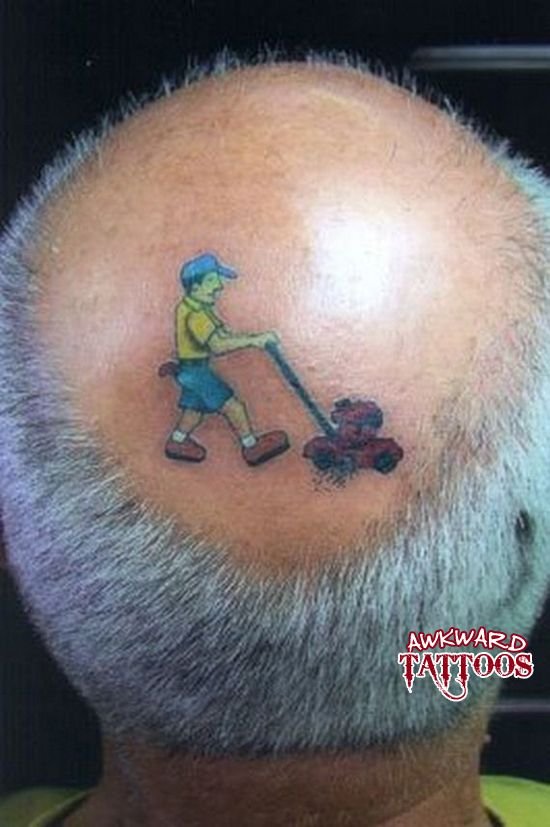Hello everyone ! Welcome back to the new episode of Imagicnation ! A blog where we will reveal the answers to some of the most interesting & curious questions related to science...

Hey guys...how many of you are having hair disorders?? I guess most of us. Focusing on that, here I present you an article on an autoimmune hair disorder called Alopecia Areata. But, before jumping straightly into the topic, I really want you to know about the basics. So, let's start with a brief introduction of one of our skin appendages, the HAIR !
*So what actually is hair??
- Hair is a filament like structure composed of proteins (alpha keratin), that grows from follicles in the skin, or dermis. It is one of the characteristic features of mammals.
*How does our hair actually look like ??
L.S of hair:
It is made up of 3 parts:
- Hair shaft: It is the part of hair which is visible above skin.
- Hair follicle: It is the part of hair embedded in skin.
- Hair bulb: It is the deepest part of follicle.

C.S of hair:
It is made up of the following parts:
- Medulla: It is the central core, present in terminal hair.
- Cortex: It surrounds the medulla in terminal hair.
- Cover: Follicle is ensheathed by inner root sheath and outer root sheath.
*What are the types of hair??
Our hair is of 3 main types:
- Lanugo hair: These are fine, soft hair of fetus which are shed in utero but are retained rarely
- Vellus hair: Present on most parts of our body
- Terminal hair: Present on axillae, pubis, beard and moustache
*Hair cycle and growth:
It occurs in 3 phases:
- ANAGEN: active hair growth that lasts between two to six years
- TELOGEN: resting phase that lasts about two to three months. At the end of the resting phase the hair is shed and a new hair replaces it
- CATAGEN: transitional hair growth that lasts two to three weeks.
*What is Alopecia ??
- Alopecia is a condition in which hair is lost from some or all areas of the body, usually the scalp.
It is a non-communicable disorder of the hair and occurs more frequently in people who have affected family members, suggesting that heredity may play a factor.
*What are the causes of Alopecia ??
The causes are shown below:
*What actually is Alopecia Areata (AA) ??
- It is a non-cicatrical, non-inflammatory disorder where there are large areas of hair loss with exclamatory mark hair at the edge.
*What is the cause behind Alopecia Areata ??
- AA is thought to be an autoimmune disorder in which the body immune system attacks it’s own hair follicles and suppresses or stops hair growth.
There is evidence that T type lymphocytes cluster around these follicles causing inflammation and lead to subsequent hair loss. However, an unknown environmental trigger such as emotional stress or a pathogen is thought to combine with hereditary factors to cause this condition.
*Epidemiology:
Gender:
- Male : female = 1 : 1
Age:
- It can occur at any age.
*What are the clinical features ??
The features are :Morphology:
- Discoid patch with no scaling, papules, inflammation or atrophy
Presence of exclamatory sign (!) is pathogmonic.
Site:
Scalp, less commonly on beard, eyebrow and eye lashes.
Course:
Unpredictable, i.e, there can be spontaneous recovery with regrowth or progresses to alopecia totalis or to even alopecia universalis
Variants:
- Ophiasis: Band like pattern.
- Alopecia totalis: Hair loss of entire scalp.
- Alopecia universalis: Hair loss of entire body.
All these three have very poor prognosis.
Association:
- There is thinning and pitting of nail plate. Unlike psoriasis, these pits are fine.
*What are the investigations to be done??
- Generally, it is not required.
- But, if suspected we must rule out other autoimmune disorders.
*How is the diagnosis done ??
- It is done on the basis of clinical features:
i) Non cicatrical patch of hair loss, without inflammation.
ii) Presence of '! mark ' hair at the edge of patch.
iii) Site of occurence: usually scalp, sometimes beard, mustache, eyebrows and eye lashes. Rarely entire body.
iv) Nail changes are seen.
*What are the Differential diagnosis ??
- Alopecia Areata should must be differentiated from:
i) Tinea Capitis
ii) Cicatrical Alopecia
*What is the treatment of Alopecia Areata ??
-If few lesions are present:
Less than 6 months :
- Spontaneous recovery is seen.
More than 6 months :
-Topical therapy with steroids like Clobetasol, Mometasone etc.
-Minoxidil
-Topical calcipotriol, a vitamin D derivative, has been used successfully in treatment of areata
-If extensive lesions are present:
Oral corticosteriods:
- May be used, but withdrawal often leads to relapse
- It is given daily or weekly doses.
- Associated with serious side effects.
Psoralens and PUVA
- They are only used in extensive lesions.
- They can be combined with oral steroids and given as OMP (Oral Mini Pulse)
Diphencyprone
- They are contact sensitizers
- Shows promising outcomes
Cosmetic cover using wigs (esp. for alopecia totalis)

So guys, I believe that's all you need to know about the basics of Alopecia Areata..there are definitely a lot things too, but I will be discusing on them on my coming days.
Hope you enjoyed that...
Drop your thoughts too
Thank You !

